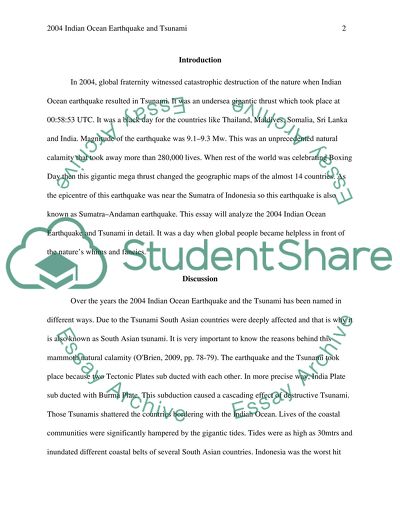Cite this document
(“2004 Indian Ocean Earthquake and Tsunami Essay Example | Topics and Well Written Essays - 1500 words”, n.d.)
Retrieved from https://studentshare.org/geography/1657605-2004-indian-ocean-earthquake-and-tsunami
Retrieved from https://studentshare.org/geography/1657605-2004-indian-ocean-earthquake-and-tsunami
(2004 Indian Ocean Earthquake and Tsunami Essay Example | Topics and Well Written Essays - 1500 Words)
https://studentshare.org/geography/1657605-2004-indian-ocean-earthquake-and-tsunami.
https://studentshare.org/geography/1657605-2004-indian-ocean-earthquake-and-tsunami.
“2004 Indian Ocean Earthquake and Tsunami Essay Example | Topics and Well Written Essays - 1500 Words”, n.d. https://studentshare.org/geography/1657605-2004-indian-ocean-earthquake-and-tsunami.


